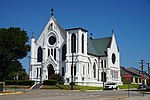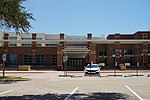Millimeter Anisotropy eXperiment IMaging Array

The Millimeter Anisotropy eXperiment IMaging Array (MAXIMA) experiment was a balloon-borne experiment funded by the United States NSF, NASA, and Department of Energy, and operated by an international collaboration headed by the University of California, to measure the fluctuations of the cosmic microwave background. It consisted of two flights, one in August 1998 and one in June 1999. For each flight the balloon was started at the Columbia Scientific Balloon Facility in Palestine, Texas and flew to an altitude of 40,000 metres for over 8 hours. For the first flight it took data from about 0.3 percent of the sky of the northern region near the Draco constellation. For the second flight, known as MAXIMA-II, twice the area was observed, this time in the direction of Ursa Major. Initially planned together with the BOOMERanG experiment, it split off during the planning phase to take a less risky approach by reducing flying time as well as launching and landing on U.S. territory.
Excerpt from the Wikipedia article Millimeter Anisotropy eXperiment IMaging Array (License: CC BY-SA 3.0, Authors, Images).Millimeter Anisotropy eXperiment IMaging Array
Farm-to-Market Road 3224,
Geographical coordinates (GPS) Address Nearby Places Show on map
Geographical coordinates (GPS)
| Latitude | Longitude |
|---|---|
| N 31.78 ° | E -95.7228 ° |
Address
NASA - Columbia Scientific Balloon Facility
Farm-to-Market Road 3224
75803
Texas, United States
Open on Google Maps









